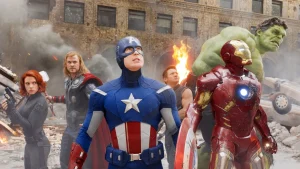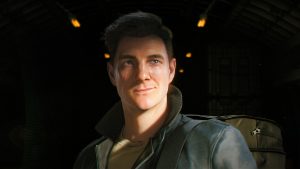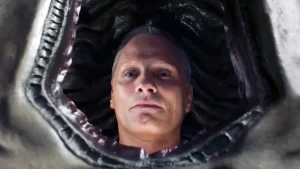DC’s Absolute Universe is the biggest thing in comics right now. Set in an alternative universe where everything is influenced by Darkseid energy, it’s a universe driven by turmoil and challenge where the heroes are the underdogs rather than the powerful figures fans are accustomed to. With five current ongoing series, readers get to explore these darker versions of some of DC’s most iconic characters, but the biggest of them might be Batman. Absolute Batman, from writer Scott Snyder and artist Nick Dragotta, has been a force in comics, seeing massive popularity among readers as is redefines the Dark Knight and many of the iconic characters in his world in unexpected and sometimes shocking ways.
But while Absolute Batman is undeniably a good comic and doing some very interesting things with the Batman mythos, there’s something about the book that no one is really talking about. No one is really talking about how, even with the sweeping changes to Bruce Wayne and the reimagining of his origins that are bringing something different to what might be the most popular character in comics, Absolute Batman is also simultaneously maintaining and even feeding into an overdone status quo that the hero has been stuck in for years. The truth is, Absolute Batman is just yet another gritty Batman story that relies on bleakness and darkness rather than take real chances that would break new ground and genuinely reinvent DC’s biggest hero.
Absolute Batman is, on its face, a very different sort of Batman story. Readers are let into the world of a younger, blue-collar Bruce Wayne whose origin is still rooted in traumatic parental loss, but loss that is slightly different. This Bruce Wayne lost his father as a child when the man was murdered protecting Bruce and other children on a trip to the Gotham Zoo. This leaves Bruce to grow up with his mother, but the death of his father is still a devastating loss. This Bruce also grows up in Crime Alley rather than a mansion just outside the city and, eventually, he gets a university scholarship that allows him to study and train for his ultimate plan to wage war against Gotham’s crime as Batman. The story sees Bruce doing everything on his own with very limited resources and also introduces changed versions of some of the characters familiar to the overall Batman mythos. His classic rogues are actually his childhood friends, and Alfred Pennyworth is an agent sent to Gotham to investigate a criminal group and his biggest villains are also reimagined with the Joker appearing as a wealthy man.
But while these changes are significant, they also fall into some very familiar patterns. While Absolute Bruce is presented as being working class and using his day job to support and further his work as Batman, he still has access to tech and resources (and knowledge) well beyond what he should conceivably have access to. The result is a change that just feels like another version of the downplaying or stunting of Bruce’s wealth, which is something that Batman stories have done over and over for years and, most recently in “Joker War”.
The characterization of Batman’s rogues also falls into familiar tropes. While some of the foes start out being reimagined as Bruce’s childhood friends, they’re all tortured and broken by Bane, clearly setting them up to be antagonists for Batman as Absolute Batman continues. There is also the “this is all Batman’s fault” trope that comes into play here, as it’s revealed that the reason Bane is messing with any of them in the first place is Batman. Bane wants to break Batman’s friends in order to break him. And you can add that to the rehashed tropes list: breaking Batman is a story that has been done ad nauseum in comics in stories such as “Knightfall” and “City of Bane” to the point that Bane is almost a one-note character whose plans make no real sense. Repeating that here starts to feel repetitive once you take off the shiny “Absolute” of it all.
To be clear, Absolute Batman is a great read and a great Batman story. Snyder does a fantastic job of crafting the tale and Dragotta’s art and character designs are insane — the Absolute Joker design is total nightmare fuel in the best possible way. The quality of the title is not in question. But with that being said, Absolute Batman really isn’t that new or different in the way readers may have expected it to be. It is, at its core, a gritty, dark story that treads familiar paths of tearing down Batman, making everything his fault, and existing in an environment where it seems like nothing positive could actually happen, a world where Bruce will forever be caught in a cycle of pain and violence and suffering that is really no different than his life in the main universe. The fine details have changed, but everything else is really the same.
That is, perhaps, the harsh truth of Absolute Batman. It’s not really that much different from most Batman stories that DC has given readers in recent years. Instead of being a genuinely different take on DC’s most iconic character, Absolute Batman is instead just another gritty reboot, just one that happens to have a bigger, bulkier vigilante with a less fixed moral code. It’s nothing new, which given how interesting and creative the other Absolute titles are, feels a little like a letdown. Absolute Wonder Woman and Absolute Superman are both very different from their main universe counterparts. Absolute Martian Manhunter is a wild reinvention. Absolute Batman had an opportunity to go that route as well and completely redefine the character. Instead, readers get a book that continues the idea that Batman can only be dark, gritty, and kind of miserable. It’s just doing it in a well-crafted, fun to read way.
What do you think? Leave a comment below and join the conversation now in the ComicBook Forum!
The post Nobody Wants To Talk About the Harsh Truth of Absolute Batman appeared first on ComicBook.com.




